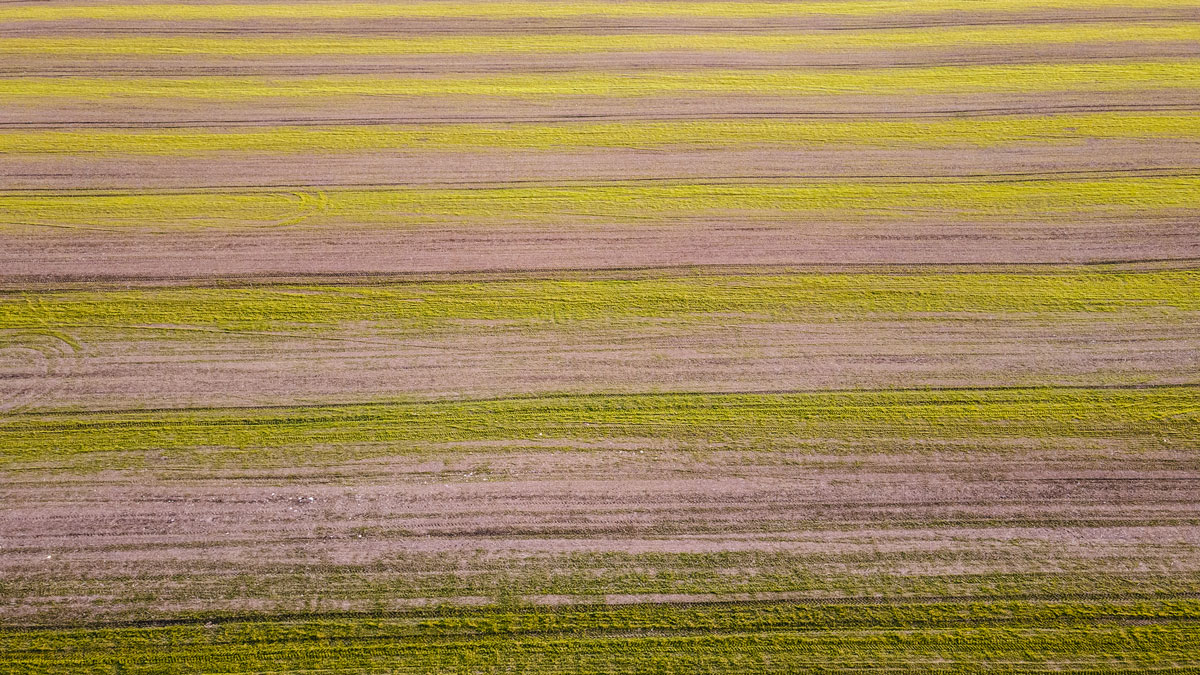Organic Versus Regenerative Agriculture: A Complicated Relationship
Organic and regenerative agriculture aren’t the same, but advances in organic may pave the way for broader adoption of regenerative practices.

March 2023
Volume 77, No. 2
Organic agriculture is both a complement and a complication to the push for regenerative agriculture. Its success demonstrates that financial rewards can encourage more sustainable practices on the farm, but the organic approach also stops short of the philosophy behind regenerative agriculture.
Clear Frontier, for example, is a startup funded by wealthy investors that has begun buying up Midwestern farmland to convert it to organic agriculture and has acquired about 8,500 acres so far. The Omaha, Neb.–based outfit is on its way to spending a total of between $200 million and $300 million over a decade to purchase about 30,000 acres for that purpose, says Justin Bruch, president and cofounder.
“We buy the land and lease it to farmers on a long-term basis and help them with crop rotation and cover crops and technology around that, as well as give them the runway to get from conventional to organic in 35 months,” Bruch says.
Among other things, Clear Frontier aims to detail the financial gains for farmers from doing things organically. “It’s important for farmers not just to have a sustainability case but to be profitable in a longer-term case as well,” says Cristina Rohr, managing director of investments for S2G Ventures, which has invested in Clear Frontier. “It’s validating to have proof from actual farms.”
The market is validating the boom in organic acreage. U.S. sales of organic foods reached $52.3 billion in 2021, and will ride compound annual growth averaging nearly 9%, to $95 billion a year in sales by 2026, according to BlueWave Consulting and Research.
But organic agriculture isn’t regenerative agriculture, even though there’s a lot of overlap between the two. Organic carries strict requirements and regulatory definitions in the United States and elsewhere, focused mainly on inputs: not using pesticides or synthetic fertilizers.
So while both organic and regenerative philosophies also can involve crop rotation, for example, organic farmers use light tillage, while regenerative agriculture discourages any tillage. And synthetic fertilizer can have a role in regenerative farming while it’s verboten in organics, which is one reason yields on organic farms typically are lower than in conventional farming.
Still, Bruch believes that organics can show a way for the growth of its regenerative cousin by demonstrating that the end consumer will pay more for products that manifest efforts to protect human health and promote sustainability.
“With organic, you have a standard, and documentation, and you’re paid a premium to get there,” Bruch says. “If there’s no criteria and you don’t compensate” [farmers who use regenerative practices], “it’s using a shotgun versus a rifle.”
Digital Exclusives

10 Food Trend Predictions for 2022
The editors at Food Technology magazine, published by the Institute of Food Technologists (IFT), have announced their predictions for the hottest food trends for 2022.
Food Technology Articles

How to Achieve EPR-Forward Packaging, Part 2
In this two-part series, the author explores the history of Extended Producer Responsibility (EPR), what is needed to help EPR succeed, and how brands can best prepare for EPR.

How to Achieve EPR-Forward Packaging
In this two-part series, the author explores the history of Extended Producer Responsibility (EPR), what is needed to help EPR succeed, and how brands can best prepare for EPR.

Keeping the ESG Promise
An infographic describing food and beverage companies’ outlooks regarding ESG initiatives.

Ag-Tech’s Passionate Pragmatist
Agrologist and agricultural futurist Robert Saik wants to feed the world better and more sustainably. To make that happen, leveraging science and technology will be critical.

The State of Sensory Science
Three seasoned sensory scientists share their thoughts on the complexity of measuring consumer perceptions, the value of academic/industry collaboration, the evolution of the discipline, and why they love what they do.
Recent Brain Food

Supporting Sustainable Innovation
Health, welfare, and sustainability concerns have spurred consumers to explore plant-based alternatives. In this sponsored content interview, global ingredients company ofi discusses the forces driving this growing trend, and how it supports product innovation in this emerging category.
IFT Science and Policy Team Forecasts Six Trends for 2023
From a processed foods comeback to breaking food system silos and addressing food and nutrition security, our science and policy experts identify top science of food trends.
ICYMI: Our Most-Popular Business FIRST Conversations Available Online
Tune in to the IFT FIRST on-demand content channel and hear from experts and innovators who are making big impacts.
IFT Scientists' Top 5 Food Trends to Consider in 2022
What's on the horizon for the global food system in 2022? IFT’s Science and Policy Initiatives team gives their predictions on five trends that are expected to take shape in the new year.
New Program Highlights Untapped Potential of Using Food Science for Relief and Development Initiatives
The new field of Food Science for Relief and Development (FSRD) offers a fresh, high-impact approach to tackling problems of global food security, poverty, and malnutrition.


